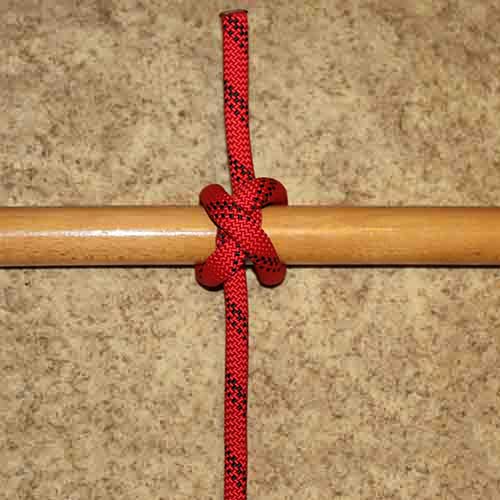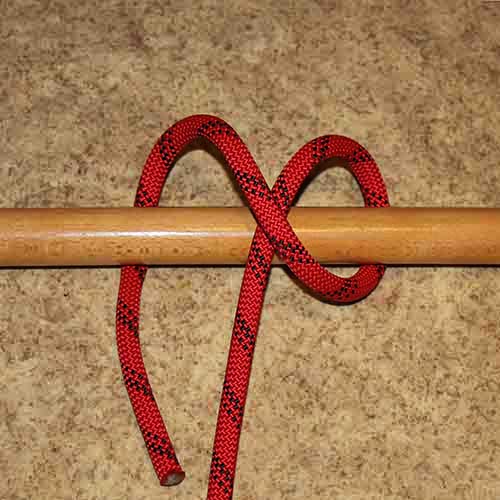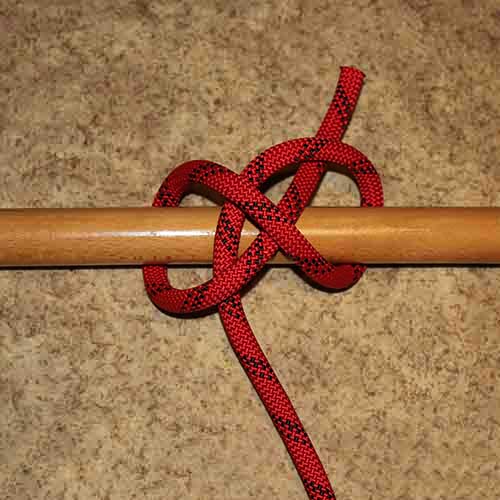Description
The constrictor knot is one of the most effective binding knots.
Use
The constrictor knot is appropriate for situations where secure temporary or semi-permanent binding is needed.
Made with small-stuff it is especially effective, as the binding force is concentrated over a smaller area.
When tying over soft material such as the neck of a bag, hard stiff cord is more effective. When tying over hard
surfaces, soft stretchy line is preferred. The constrictor knot’s severe bite (which makes it so effective) can
damage or disfigure items it is tied around.
Constrictor knots can be used for temporarily binding the fibres of a rope (or strand ends) together while splicing,
or when cutting to length and before properly whipping the ends. Constrictor knots can also be quite effective as
improvised hose clamps or cable ties.
Releasing
Jamming
Security
The constrictor is extremely secure when tied tightly around convex objects with cord
scaled for the task at hand. If binding around a not fully convex, or square-edged object, arrange the knot so the
overhand knot portion is stretched across a convex portion, or a corner, with the riding turn squarely on top of it.
In situations where the object leaves gaps under the knot and there are no corners, it is possible to finish the
constrictor knot off with an additional overhand knot, in the fashion of a reef knot, to help stabilize it. Those
recommendations aside, constrictor knots do function best on fully convex objects.
Other names
Constrictor knot, Gunner’s knot.
Tying
1. Make a turn around the object and bring the working end back over the standing part.
2. Continue around behind the object.
3. Pass the working end over the standing part and then under the riding turn and standing part, forming an overhand
knot under a riding turn.
4. Be sure the ends emerge between the two turns as shown. Pull firmly on the ends to tighten.






